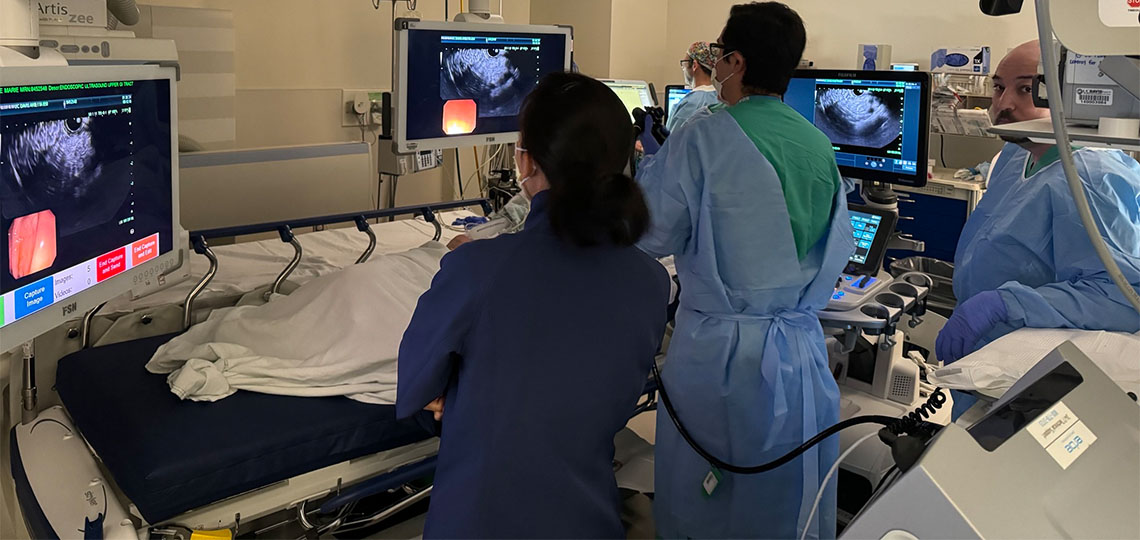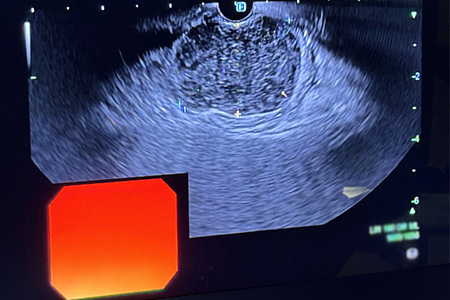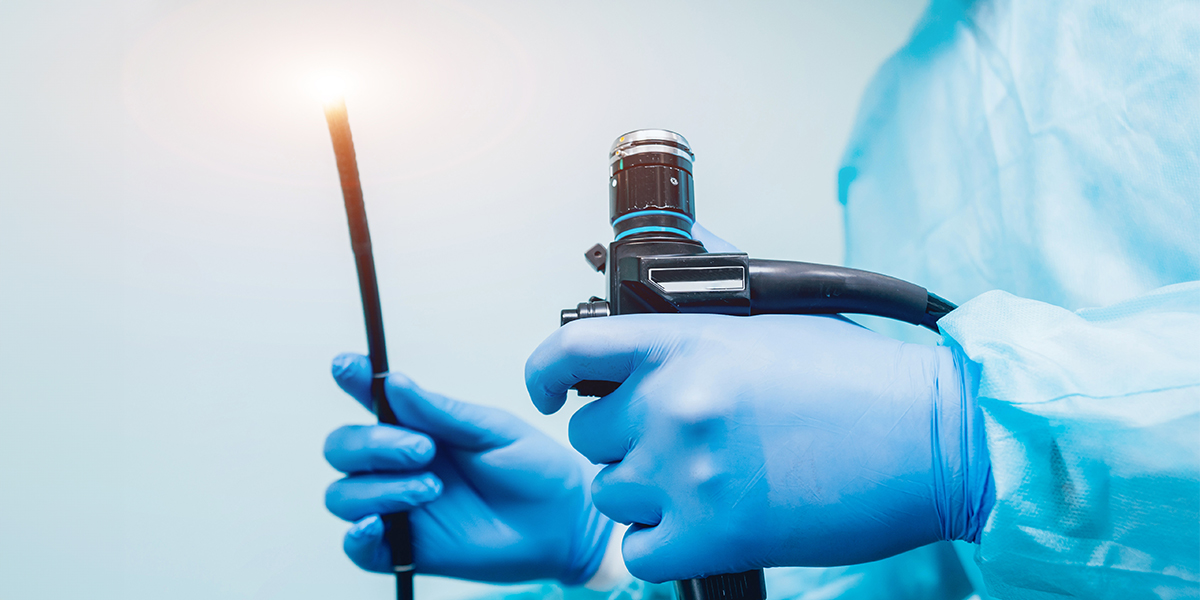UC Davis Health endoscopy team members performed the world's first endoscopic, ultrasound-guided core biopsies of a pancreatic tumor. Endoscopy is a procedure in which a thin, flexible tube inserted through a natural opening or a small incision enables doctors to view and biopsy tissues inside the body. During the endoscopic procedures, the team efficiently collected a larger than normal core of tissue, which helped improve diagnostic accuracy.
Antonio Mendoza Ladd, medical director of gastrointestinal endoscopy, performed the procedures using a specialized instrument called EndoDrill GI. Mendoza Ladd and his team used the instrument to biopsy a gastrointestinal stromal tumor and two pancreatic tumors. Together, these three cases were the first ever performed in the United States, and the pancreatic tumor biopsies were the first cases in the world done with the novel instrument.
The new device, developed by BibbInstruments AB, is considered groundbreaking because it affords much better access to deep tissues in the upper gastrointestinal tract. This includes the pancreas, stomach, esophagus, lymph nodes, and liver, where cancer can often go undetected until it has advanced.
"These initial biopsies obtained with this innovative technology provided us with tissue cores that surpassed the typical ones collected with regular needles," Mendoza Ladd said.

How the novel biopsy procedure benefits patients
Traditionally, tissue samples for diverse types of gastrointestinal tumors are collected using a procedure called endoscopic ultrasound, or EUS. This involves the use of a flexible tube with a small camera attached to an ultrasound probe at the end. The endoscopist inserts the tube down the throat and into the stomach or upper bowel area to collect tissue samples using a repetitive, stabbing motion. Patches of cells and tissue fragments collect in the needle channel.
The new technology, in contrast, enables removal of core tissue samples by means of an electric high-speed rotating cylinder that is more precise than the traditional needle biopsy method. The ultra-flexibility of the instrument allows it to access deep-lying tumors that would otherwise be difficult to reach.

used to obtain the core tissue biopsy.
"Because of the characteristics of certain tumors, sometimes endoscopic ultrasound procedures do not collect a good sample, and we end up needing to repeat the procedure to collect more tissue," Mendoza Ladd explained. "With this novel procedure, we were able to easily get a higher-quality core sample on the first pass of the needle, allowing us to provide extra tissue to pathologists that can be used to improve the diagnostic yield of the sample."
The higher quality samples enable doctors to make a more accurate diagnosis. This leads to more targeted treatment for patients with some of the most serious cancers, such as in the pancreas, stomach, esophagus, lymph nodes, and liver.





